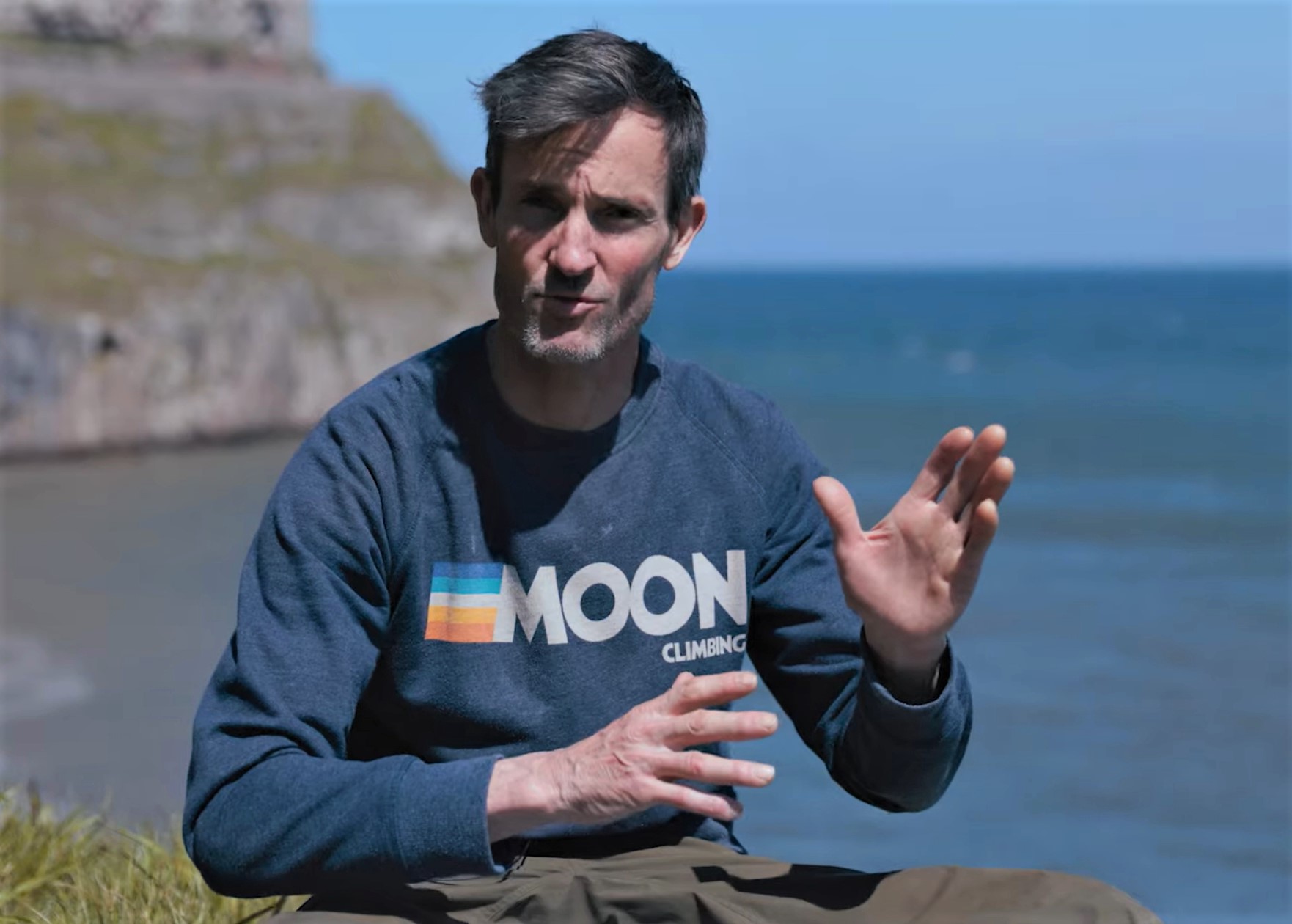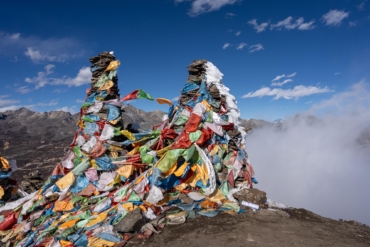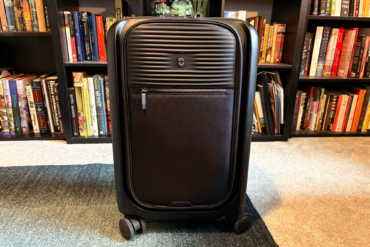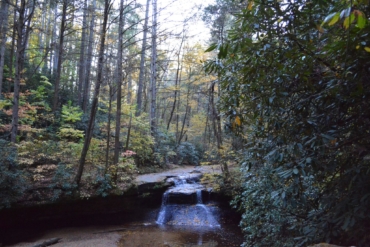Do you long to travel the world and climb hard at your dream destinations? One lifer ticked the travel project of a lifetime after he turned 50. But the difficulty of the sport climbing was the least important part.
Jim Lawyer turned climbing into his lifestyle in a different era. In the mid-1980s, the upstate New York native was a college student, working a few jobs at once, and taking whatever came his way.
Fast forward a few decades, and Lawyer is climbing at a high personal standard worldwide. His recent “Project 13” was a challenge to himself and a capstone to a lifetime of climbing.
Over 5 years, Lawyer ticked 13 5.13 routes in 13 countries worldwide. He also climbed a lot more than that — he estimates the project entailed over 60 routes 5.13 or harder, among countless others below his limit.
View this post on Instagram
To him, though, the travel meant more than the sport climbing.
“I’ve been trying to put words around why travel is important to me,” he said. “Sure, it makes you a better climber, but it also exposes you to the world. You realize that you’re a member of a global community.”
His travel stories range far and wide. Epics include an episode involving monkeys in Colombia, crawling through a climber’s toilet to recover his partner’s lost lunch, and the time strangers in a shantytown in South Africa selflessly repaired what would have amounted to thousands of dollars in damage to his rental car.
In August 2021, after 5 years of climbing and travel, Lawyer wrapped up Project 13 in Céüse, France. We reached out to learn about what motivated him to embark on it, and what he learned through the process. Climbing has guided Lawyer’s adult life and significantly shaped his personal growth.
It all started in Syracuse, N.Y.
Early Days and ‘Schwaggy’ Crags
At one of Lawyer’s four college jobs, his boss happened to be a climber who had started in the ’60s. Lawyer met him at the opportune moment — a recent empty-nester, he was beginning to get back into climbing.
Note that mentorship was the conduit to rock climbing before gyms. In the mid-’80s, even climbing magazines were in their infancy. Media and infrastructure for the sport in America barely existed — mainstream culture interpreted it as an outlaw enterprise.
But having secured a mentor who had bonded to the sport decades before, Lawyer was set up to explore it.
The two started climbing together at marginal local crags. Lawyer called Moss Island, the Little Falls, N.Y., crag where he cut his teeth, “kinda schwaggy and not very good.”
But, he said, it served a niche; the 30-foot outcrop fit the bill of a local training ground.

Soon, he started to venture further afield. Trips to the Adirondack Mountains, where he still lives, the world-famous Shawangunks gave him a thirst for climbing travel. Then, he and his cohort took a few trips out west.
Parlaying Work Into a Sport Climbing Life
He recalled an early epic on Yosemite’s classic “Royal Arches” (5.10- or 5.7 A0, 2,000 feet). After planning a day climb and starting at dawn, the party summited in pitch-black darkness. Without headlamps, there was no chance to find the descent. Happily, someone had a lighter.
“It was freezing,” Lawyer remembered. “So we made a little fire and hung out for the night until we could find the [expletive] descent gully.”
Lawyer was hooked. Shortly, he started to dream beyond the borders of the United States. When high-stoke photos of Lycra-clad pro sport climbers in magazines like Rock & Ice began to make the rounds, he wanted to get in on the action. But he didn’t see a path.
“At first, you think, ‘I’ll never do that,'” he said. “‘I’ll never have the ability to do that.’ And I lived in that belief system for many, many years.”
But he kept following the dream. In the early ’90s, he orchestrated a move to the PNW, where he had already climbed Mount Rainier and Shuksan. From there, his job with a software company helped him start traveling the world.
View this post on Instagram
He insisted on integrating climbing into early business trips to Australia, Thailand, and Japan. He took a simple approach to accessing climbing by networking with locals: ask around.
“I would organize with the people I was meeting, like, ‘Hey, do you know any climbers?’ And they’d hook me up with locals, and we’d go out and climb stuff,” Lawyer said.
The method proved successful, and Lawyer kept capitalizing on it. Inspired by early climbing globetrotters like fellow New York state native Russ Clune, he considered traveling pivotal to improving his skills.

By the early 2000s, his passport was littered with stamps, and his tick list was long. After successfully retiring, he found himself climbing full-time. In addition to climbing in 34 countries, he became highly active in the Adirondacks, eventually publishing a substantial guidebook for the expansive park.
Recently, he turned his attention to sport climbing performance. Lawyer is tall for a climber — 6’4″ — and when he changed his diet to cut weight, his climbing took off. Down from 175 pounds to 150, he felt energetic and ticked his first 5.13a redpoint at age 51.
Project 13 has since led him to world-class sport climbing locales like Céüse, France, and El Salto, Mexico, and to boutique backwaters like the Cayman Islands. “Le Privilege du Serpent” (5.13a), a pumpy classic courted by many Céüse visitors, may be the project’s crown jewel. But Lawyer says the lessons learned along the way ultimately mean more.
Sport Climbing in South Africa: Not So Black and White
Emgwenya, South Africa, is about a 2.5-hour drive from Johannesburg. Hundreds of routes on eye-popping orange quartzite at the nearby Waterval Boven draw climbers from all over the world, but most of the locals endure extreme poverty.
The city plan of Emgwenya, like that of most South African towns, exhibits the country’s fraught history of racial segregation. A “township” just outside the affluent area where the white residents live holds most of the town’s 6,000-plus residents. According to the South African government’s statistics bureau, 83% of the town’s residents are Black African. The vast majority live in the township, a network of tin huts and dirt roads.
It also happens to lie between Emgwenya proper and most of the rock climbing.
View this post on Instagram
Once, Lawyer and his climbing partner drove their rental car down a road outside the township that had recently been paved. By the time they got out, up to ¼” of wet tar had emulsified on the paint. Fearing the rental company might charge him to strip and repaint the car, he asked around to figure out how to get the tar off.
“Some locals told me you have to rub it off with diesel fuel,” he explained. “So I bought some at the gas station, and I’m trying to get the tar off with it. Then, the gas station attendant came out and said, ‘I have some friends who can help you with that.'”
The station attendant made a phone call and soon, another man drove over from the township and instructed Lawyer to follow them in his car.
“So we followed him right into the heart of the shantytown. When he stopped, he got out and looked at it and said, ‘OK, we’ll get to it, and you come back tomorrow.'”
Faced with a decision point, Lawyer evaluated whether to trust the stranger. For most of us, it would be hard to blame him for being skeptical. Most people in South African townships live at a threshold of resources that would induce desperation in the average American.
Lawyer ultimately left the car in the stranger’s care. He and his partner walked out of the shantytown, back to their razor wire-protected house in the affluent part of Emgwenya. That night, an elderly white woman working at a butcher shop gave Lawyer’s female companion the side-eye. “‘You know, you’re very petite,'” he recalls the woman saying. “‘You can’t trust the blacks.'”
Retelling the incident makes him cringe. “I didn’t buy it,” he said.
The next day, they walked back into the township and prepared themselves for whatever they might find.
“The car was there, and it was frickin’ brand new. They not only got the tar off, but they washed it and detailed the inside. It looked better than when we picked it up, freshly cleaned from the rental company.”
The two climbers paid the workers gratefully and proceeded without incident.
‘Citizens of the Planet’
In the end, Lawyer said that traveling has been instrumental in helping him develop altruistic principles. He rebelliously rejects defensive or disenfranchising attitudes in favor of a more open mindset.

“If you never leave your hometown, you’ll never have experiences” like his in the township. Lawyer added, “And you’ll always be afraid. We’re all citizens of the planet; we should all get along.”
You can follow Jim Lawyer on Instagram, where he catalogs his sport climbing and travel — including episodes that showcase the Project 13 climbs.








